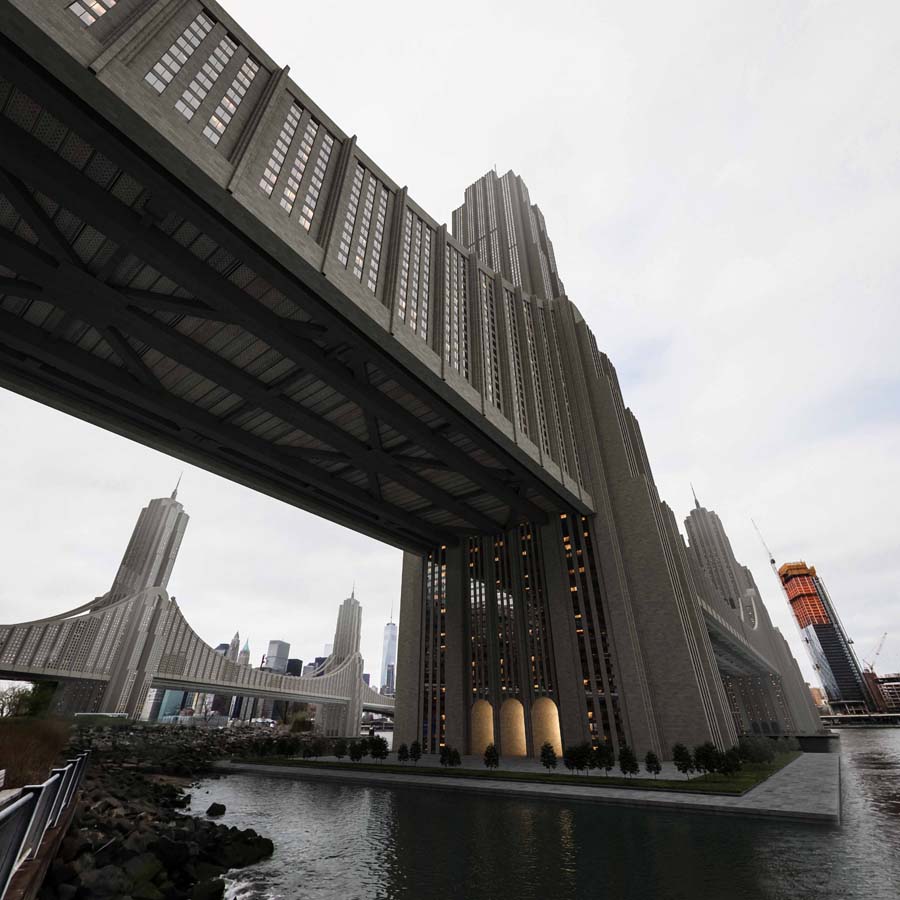Since learning about Raymon Hood in arch 2, I was intrigued by his career and specially his futuristic plans; He had a vision for “Skyscraper Bridges”– , in which he literally wanted bridges to have skyscrapers along them (the rendering looks kind of cool though).

With the American Radiator Building, I was really interested in reading about his thought process for solving his dislikes with windows. To fix the “boring window openings,” he uses black brick so that the “embarrassing reminder of the other reality inside” can become harder to see (Koolhaas 165). Since his problem was the openings themselves, I’m wondering why he didn’t try to come up with a new design for the openings rather than just completely trying to mask them. I have to agree that the final result “stimulates public interest and admiration” (Koolhaas 165) as it’s, in the simplest way I could describe it, a very pretty building (hence why I have a picture of it on my wall :D).
I also found the quote “embarrassing reminder of the reality inside” interesting after reading “Typical Plan” since it’s stated that Raymond Hood is one of the inventors of the plan. This either means that Hood’s solution was the Typical Plan or that he isn’t a fan of the plan himself. Either way, the plan was popularized due to the pressure of “the forces of unpredictable change” (Martin 90). This was a fair worry, as I feel many professionals, specifically architects, were traumatized by events like the Great Depression and WWII which required the shift of different functions of spaces. We can specially see this today with how architects and interior designers are being asked to rethink space with the COVID pandemic. However, this worry (along with the invention of the curtain wall) led to some not-so-interesting facades which all kind of got a little repetitive. In my opinion, this led to some buildings lacking interest in both the outside and inside.
Koolhaas. 1978. Delirious New York.
Koolhaas. 1985. Typical Plan.
Martin. 2003. The Organizational Complex.

A great summary Selinee that ties together with your own take of the results, both in the American Radiator Building as well as to current events. Can buildings other than those that I’ve included in this past section (towers, office buildings, etc) allow for the ‘unpredictability’ that you address? What makes the connection between the Typical Plan and the tower so intimate?